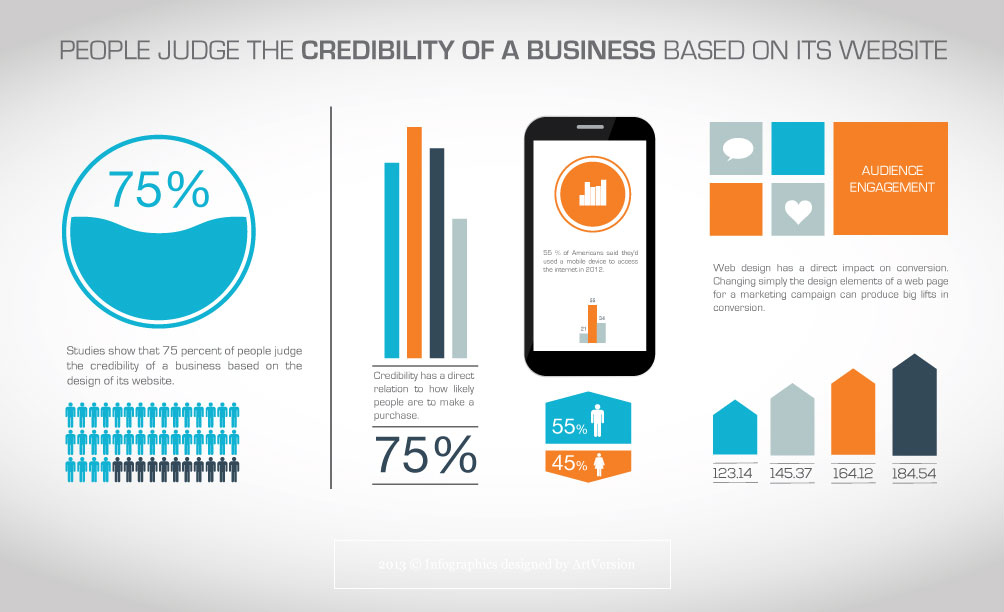Prepare To Trip With Time And Uncover Exactly How Internet Sites Have Actually Become Much More Advanced, Easy To Use, And Visually Magnificent
Prepare To Trip With Time And Uncover Exactly How Internet Sites Have Actually Become Much More Advanced, Easy To Use, And Visually Magnificent
Blog Article
Created By-Kinney Dalby
In the past, websites were straightforward and concentrated on details. Navigation was straight, and design was for desktop computers. Now, individual experience is crucial. Information guides styles for simple navigating. Receptive designs fit various gadgets. Today, dark mode reduces stress, and minimal menus improve navigating. Interactive attributes involve customers, and vibrant visuals attract attention. Experience improves engagement. See just how layout has actually advanced to improve your on the internet journey.
Very Early Days of Website Design
In the early days of website design, simplicity preponderated. Web sites were fundamental, with minimal shades, typefaces, and designs. The emphasis got on providing details rather than flashy visuals. Individuals accessed the internet through slow-moving dial-up links, so speed and functionality were crucial.
Navigation menus were straightforward, commonly situated on top or side of the page. Internet sites were made for home computer, as mobile browsing had not been yet common. Web content was king, and developers prioritized easy readability over complicated design aspects.
HTML was the key coding language used, and developers had to work within its restraints. Animations and interactive features were marginal contrasted to today's standards. Web sites were static, with little vibrant content or customized customer experiences.
Increase of User-Focused Style
With the evolution of web site style, a change in the direction of user-focused design concepts has become increasingly popular. Today, producing websites that prioritize user experience is critical for engaging site visitors and accomplishing organization objectives. User-focused style entails understanding the requirements, choices, and behaviors of your target audience to tailor the website's format, material, and includes as necessary.
Designers now conduct complete research, such as user studies and functionality screening, to collect understandings and feedback directly from customers. This data-driven strategy helps in producing instinctive navigating, clear calls-to-action, and visually appealing user interfaces that resonate with site visitors. By placing the individual at the center of the design procedure, sites can deliver a much more tailored and enjoyable experience.
Receptive style has additionally emerged as a crucial element of user-focused design, making sure that sites are optimized for different devices and display dimensions. This flexibility improves availability and functionality, catering to the diverse methods customers communicate with sites today. In essence, the increase of user-focused style indicates a change in the direction of producing electronic experiences that prioritize the requirements and assumptions of completion user.
Modern Trends in Web Design
Check out the current fads forming website design today. One popular pattern is dark mode layout, offering a smooth and contemporary appearance while decreasing eye pressure in low-light settings. One more essential trend is minimal navigating, simplifying menus and improving individual experience by concentrating on essential elements. Incorporating micro-interactions, such as computer animated switches or scrolling results, can produce an extra interesting and interactive site. Receptive layout continues to be crucial, guaranteeing smooth customer experiences across numerous devices. In addition, utilizing bold typography and asymmetrical designs can include visual passion and accentuate specific material.
Integrating AI innovation, like chatbots for customer assistance or tailored recommendations, enhances customer interaction and simplifies procedures. Access has additionally become a considerable pattern, with designers prioritizing comprehensive design methods to accommodate diverse customer demands. Accepting sustainability by maximizing web site performance for speed and effectiveness is an additional arising pattern in web design. Collaborating with user comments and information analytics to iterate and boost layout constantly is vital for staying pertinent in the ever-evolving electronic landscape. By welcoming these contemporary fads, you can produce a visually enticing, straightforward web site that reverberates with your target market.
Final thought
As you reflect on the advancement of site layout from the very early days to now, you can see how user-focused style has ended up being the driving force behind modern fads.
Accept https://www.google.com/maps/place/Moon+and+Owl+Marketing/@32.9757271,-106.5344695,1840583m/data=!3m1!1e3!4m6!3m5!1s0x864ddeaa4179705b:0x488d41d2cc6b9750!8m2!3d32.9757271!4d-97.5696258!16s%2Fg%2F11b6mpccrg?entry=ttu&g_ep=EgoyMDI1MDIxMS4wIKXMDSoJLDEwMjExNDUzSAFQAw%3D%3D of change and adjustment in web design, constantly keeping the user experience at the leading edge.
Remain existing with the most up to date fads and modern technologies, and never ever quit evolving your approach to create aesthetically stunning and user-friendly web sites.
Evolve, adjust, and create - the future of web design remains in your hands.
